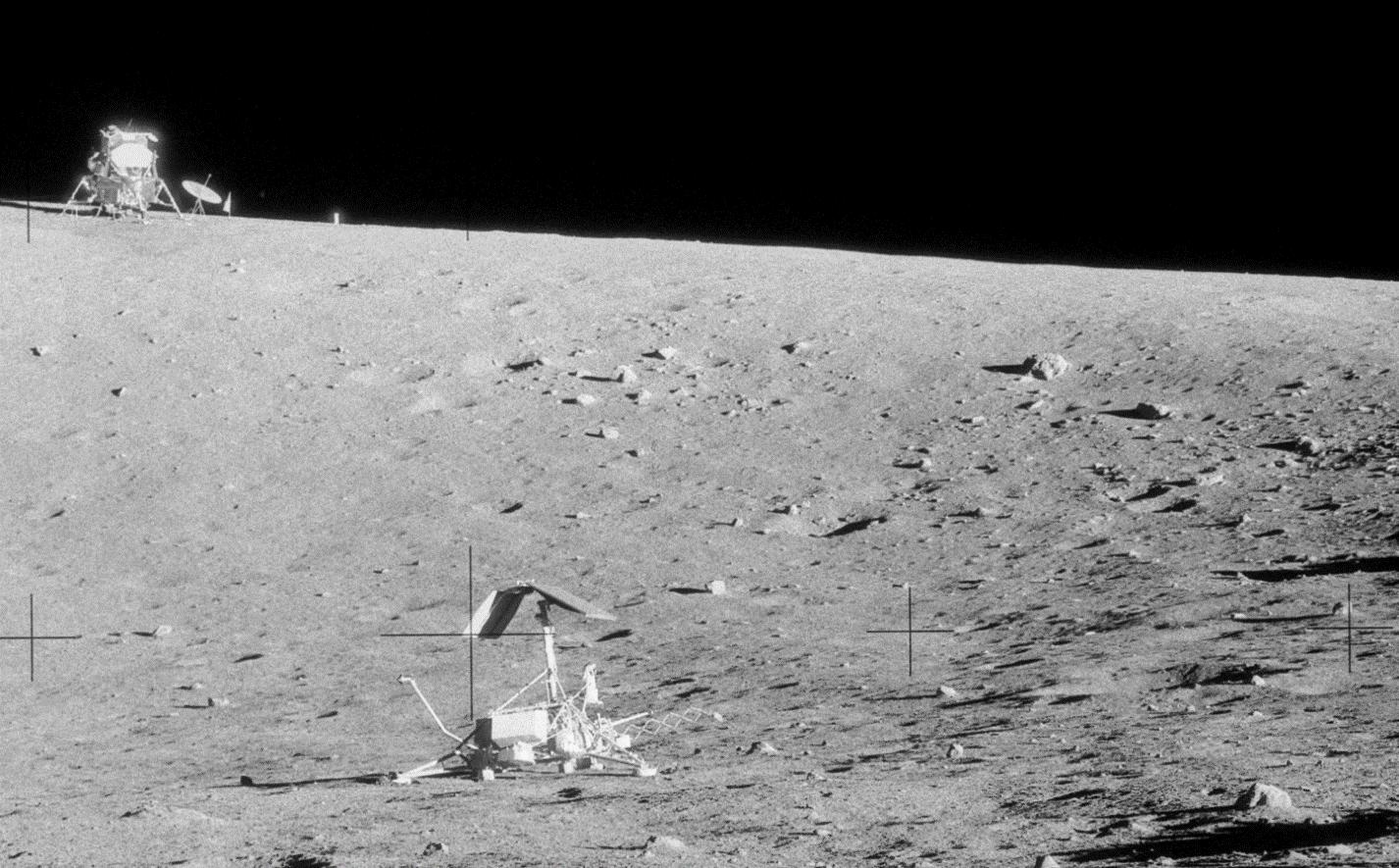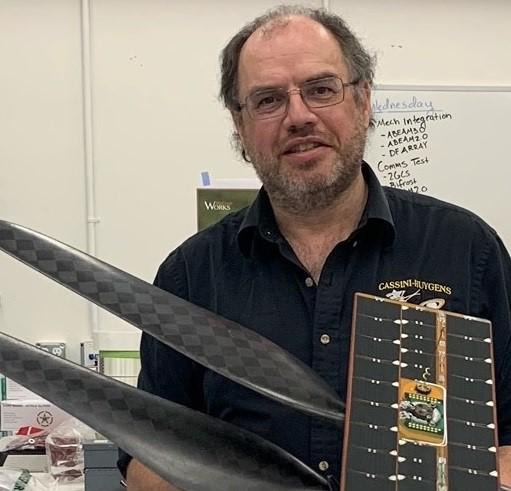
3 minute read
COSPAR Extended Abstracts
COSPAR publishes scientific papers in both Advances in Space Research (ASR) and Life Sciences in Space Research (LSSR). In this regular section we invite the author or authors of one or more recent papers that have been particularly significant in terms of scientific impact to write extended abstracts that summarise these papers.
Here we have invited Ralph Lorenz to summarise his paper on “Planetary landings with hazard avoidance: A review”, which appeared in Advances in Space Research, 2023, 71, 1 (doi: 10.1016/j.asr.2022.11.024), followed by Xu Cao who sums up their paper on “Drug Discovery for Space Radiation Using iPSCs and Clinical Trials in Dish”, published in Life Sciences in Space Research, 2022, 35, 140-149 (doi: 10.1016/j.lssr.2022.05.006). Richard Harrison, General Editor SRT
Planetary Landings with Hazard Avoidance: A Review
[Ralph Lorenz, Space Exploration Sector, Johns Hopkins Applied Physics Laboratory, MD, USA]
Sometimes the future sends us to the past. The NASA Dragonfly New Frontiers mission to Titan, featuring a radioisotope-powered octocopter to fly autonomously on Saturn’s moon Titan in the mid-2030s to explore its diverse, organic-rich surface, is widely considered to be exciting, innovative, and perhaps even futuristic, although arguably it largely is ‘merely’ an application of existing technologies (Turtle and Lorenz, 2021; Lorenz, 2022).
Whereas the long series of mostly successful, and mostly unguided, Mars landers in the past three decades have been able to simply adopt previous de- signs and specifications, or at least overall assumptions, the fact that Dragonfly confronts landing on a new planetary body, probably dozens of times, has forced some consideration whether these assumptions should apply.
In particular, there is a convention that risks due to interaction of spacecraft with terrain (e.g. hitting rocks – see figure 1) should be only of the order of a few per cent, to be commensurate with other risks such as launch failure (see, for example, Lorenz, 2019). Since an unguided vehicle samples the terrain randomly, it follows that the fraction of the delivery ellipse occupied by mission-ending hazardous areas should only one or two per cent: this can be highly restrictive especially where the delivery ellipse is large. But this simple metric is not appropriate on some target worlds (including Titan) data do not exist to measure hazards at the lander scale, nor where hazards can be detected in-situ and avoided at scales much smaller than the delivery errors.
As part of a series of Dragonfly-related papers documenting aspects of environment interaction, specification and development testing, I wanted to summarize the experience with such ‘smart’ landings, starting of course with the Apollo missions where the sense and avoid function was performed by the vision of a human pilot. Famously, Apollo 11 commander Neil Armstrong observed that the Lunar Module “Eagle” was approaching a field of rocks adjacent to a crater, and shifted the landing aimpoint to touch down further downrange. The area coverage of hazards, as mapped prior to the mission, in the Tranquillitatis landing site was about 10%, much higher than the goal for unguided missions. And once Apollo 12 demonstrated precise landing capability, later missions accepted even 3040% terrain risks.
It was for me, having an interest in space exploration history, fascinating to delve into the details of the Apollo site certification process, and then to contrast this with the landings in the last decade on the Moon, Mars and small bodies that have been effected with automatic systems performing the hazard avoidance functions. A variety of approaches exist, e.g. in the case of the Mars 2020 rover Perseverance, the system did not sense hazards directly, but rather performed terrain-relative navigation to guide itself to safe spots in a pre-determined hazard map developed on Earth from previous orbital data.
It was striking too, in researching the paper, to note the similarities and differences between NASA missions and those of other agencies – the automatic lunar landing of the Chinese Chang’E-3 mission, for example.
The choice of landing site is usually the result of dynamic tension between science value and engineering safety, since the most hazard-free sites are usually the least interesting (Lorenz, 2019), and the capability of automatic systems to negotiate hazards greatly widens the range of possible sites. While the moment of landing is an engineering triumph, and an occasion of high drama for the public, it is usually just the beginning of the scientific journey beyond.
Other Resources https://www.nasa.gov/image-feature/goddard/2019/lro-camera-simulates-view-from-lunarmodule
Scott Manley analysis of the Chang’e-4 landing https://www.youtube.com/watch?v=unEbg_dt3DM Chang’e-5 Landing set to music https://www.youtube.com/watch?v=VS9zr6MrCiM
References
Lorenz, R. 2019 Calculating Risk and Payoff in Planetary Exploration and Life Detection Missions, Advances in Space Research, 64, 944-956, https://doi. org/10.1016/j.asr.2019.05.026
Lorenz, R. D. 2022. Planetary Exploration with Ingenuity and Dragonfly: Rotary-Wing Flight on Mars and Titan, American Institute of Aeronautics and Astronautics, ISBN 978-1-62410-636-1, 194pp, June 2022
Turtle, E. P. and R. D. Lorenz, 2021. The Dragonfly Mission to Titan: Technological Development and Science Converge to Enable New Exploration, The Bridge, Vol. 51 No.3, pp.59-66
About the Author
Ralph Lorenz is a planetary scientist at the Johns Hopkins Applied Physics Lab, Laurel, MD, USA, specializing in the interaction of vehicles and instruments with planetary surfaces and atmospheres. He is associated with NASA’s InSight and Perseverance missions at Mars, the Japanese Venus climate orbiter Akatsuki and the DAVINCI Venus probe Discovery mission presently in development. He worked for ESA on the design of the Huygens probe to Titan, planned Cassini’s radar observations, and is the Mission Architect for the Dragonfly New Frontiers mission. He has over 300 refereed journal publications and has authored ten books, including “Space Systems Failures” and “Titan Unveiled”. He received the 2022 Fred Whipple Award from the American Geophysical Union.






